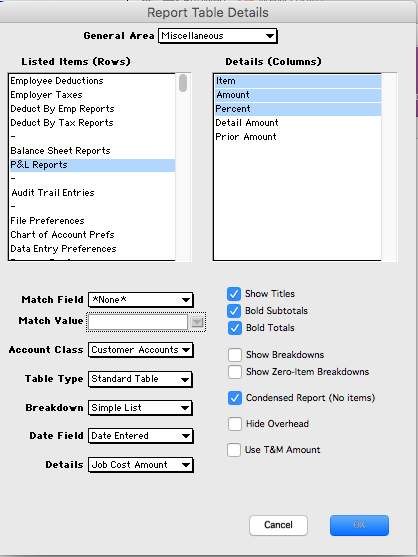Two months ago, our staff was ready to start serious testing on the new accounting software. Again. We do that by “eating our own dog food”. That means daily use to run TurtleSoft and SmartKnives. It was at least the 30th time we’ve done that. Each attempt gets a bit further.
What stopped us this time was printing: invoices and sales receipts were ugly. Custom Layouts is the way to fix that, but it still was missing some things. While adding those, all sorts of other bugs turned up, and were fixed one by one.
Printing is better now, but still not complete. It’s down to extra gray when drawing rectangles, and an ugly breakdown table. Sales receipts need one of those to itemize multiple items, and it needs to move down a bit to look good. Fonts are different, so some column widths need a tweak.
All that happens in Custom Layouts, and it stirs up a C++ problem. To change the table’s position, it has to act like the other fields: a click shows handles, and a drag moves it around. To edit columns, it has to be a table: double-click in a column shows details to change, drag on the edge of a column changes its width.
TCQ_LayoutField is our C++ class which handles the clicky and draggy stuff. It’s a type of QWidget, the Qt class that draws stuff on the screen (plus other tricks).
TCQ_Table is another C++ class which makes a spreadsheet-like table. It has children that handle each place it is used: in breakdowns, lists, reports, and printed forms. TCQ_Table is also a QWidget.
Custom Layouts has a TCQ_TableLayoutField which acts like both. The C++ way to do that is to give it two different parents. Normally that is no big deal, but this time it creates a dilemma. There are two paths to QWidget: which one to take? It’s called diamond inheritance. Kinda like incest, but for screen objects.
Up until now, TurtleSoft has never made any diamonds. There always has been a way to avoid them. We tried a few ways to make that happen for TCQ_TableField, but all had serious problems. So, right now we’re trying the diamond. When the compiler complains, we just need to tell it which branch to take.
This is a bold experiment in advanced C++ design. Tables still don’t drag right in Custom Layouts, but we’re working on it. Worst case, our staff will toss a few days work and try some other way.
Dennis Kolva
Programming Director
TurtleSoft.com

